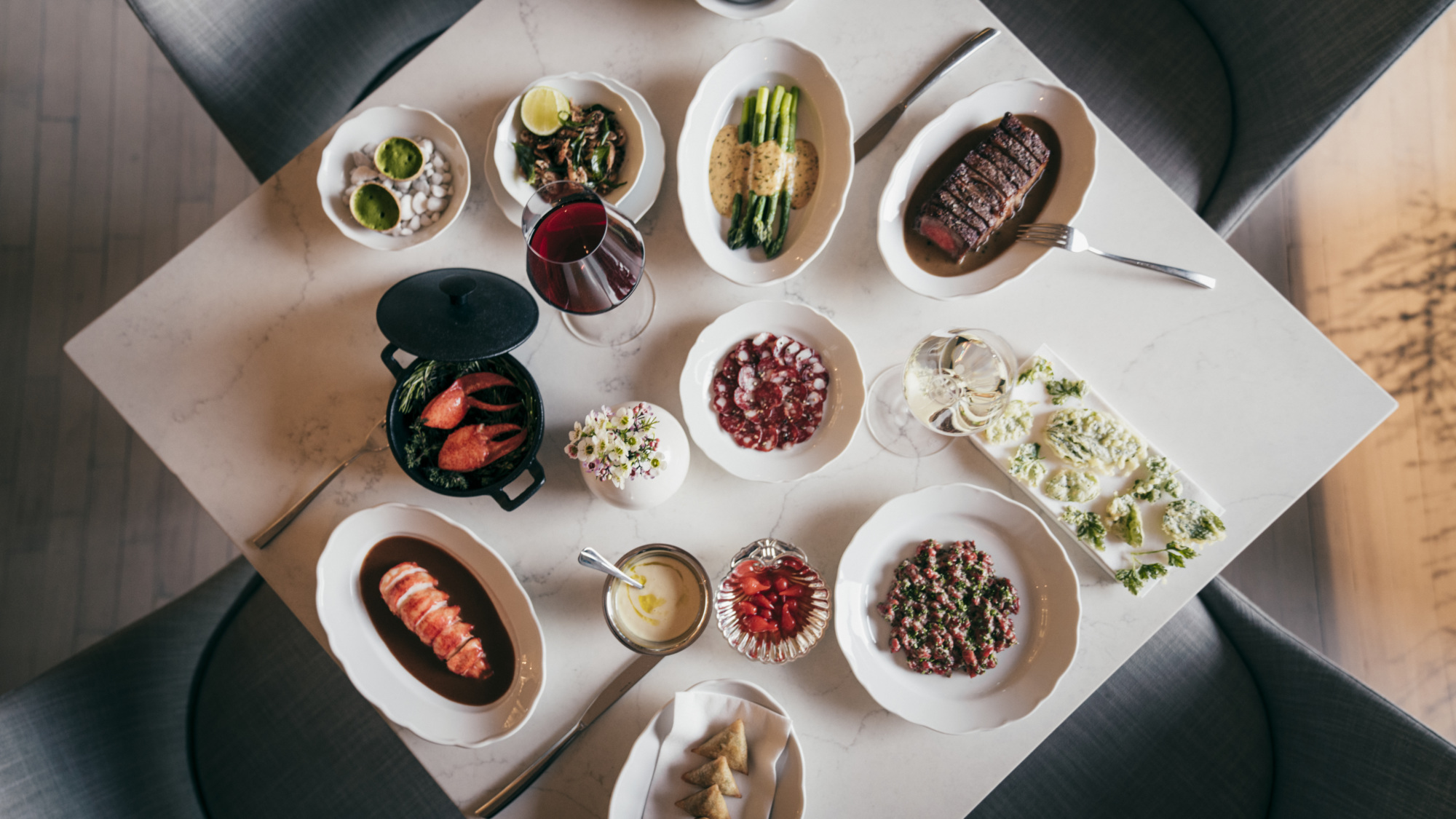
What to Expect at Camphor, the New Arts District French Bistro
Before you go to a restaurant, what do you want — or need — to know most? In our series, The Rundown, we’re sharing all the essentials about newly opened (as well as some of your favorite) restaurants.
The new French bistro in the Arts District, Camphor, breathes new life into the genre by incorporating South Asian influences, at the practiced hands of two Alain Ducasse veterans. Amid a modern, white interior set with blue velvet booths, co-executive chefs Max Boonthanakit and Lijo George, who met while working at the Michelin-starred Blue in Bangkok, team up for a menu that’s simultaneously classic and imprinted with unique flair.
While Boonthanakit is no stranger to the space thanks to his time as pastry chef at Nightshade, the former occupant of the space, this is George’s first foray not only into Los Angeles, but stateside dining as a whole. Thanks to both chefs’ extensive experience in award-winning kitchens, expectations are high for Camphor to carve out a space all its own.
Here’s everything you need to know before you go.

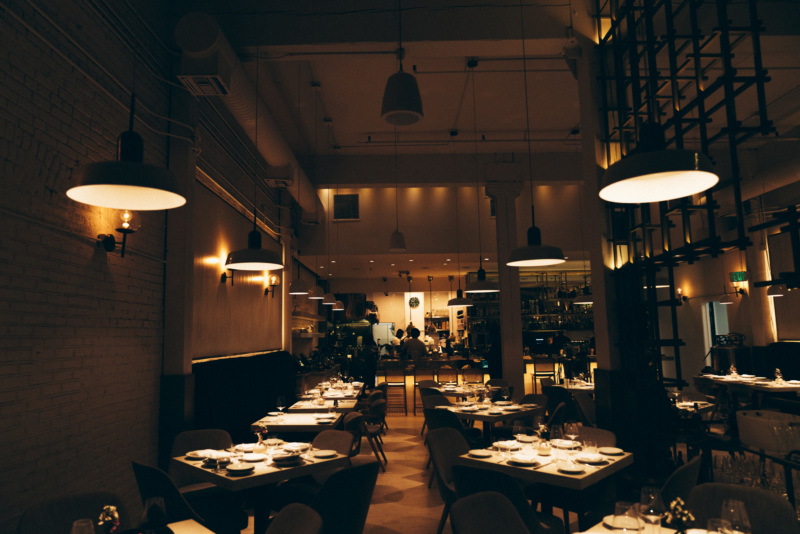
1. Camphor is, first and foremost, a French restaurant.
Boonthanakit and George want to create their own version of a corner bistro. This is classical French dining, with judiciously deployed South and Southeast Asian twists. “It’s 99% French, 1% everything else. We want to help transport the diner to another part of the world,” says Boonthanakit.
“L.A. already has the best Asian food outside of Asia, the best Mexican food outside of Mexico; it’s hard to compete with that.”
He points to the addition of pineapple or lemongrass to classic French sauces, or snacks such as gunpowder baby shrimp and lentil puff pastries as examples of Asian influence, but you can expect your meal to lead with French flavors.
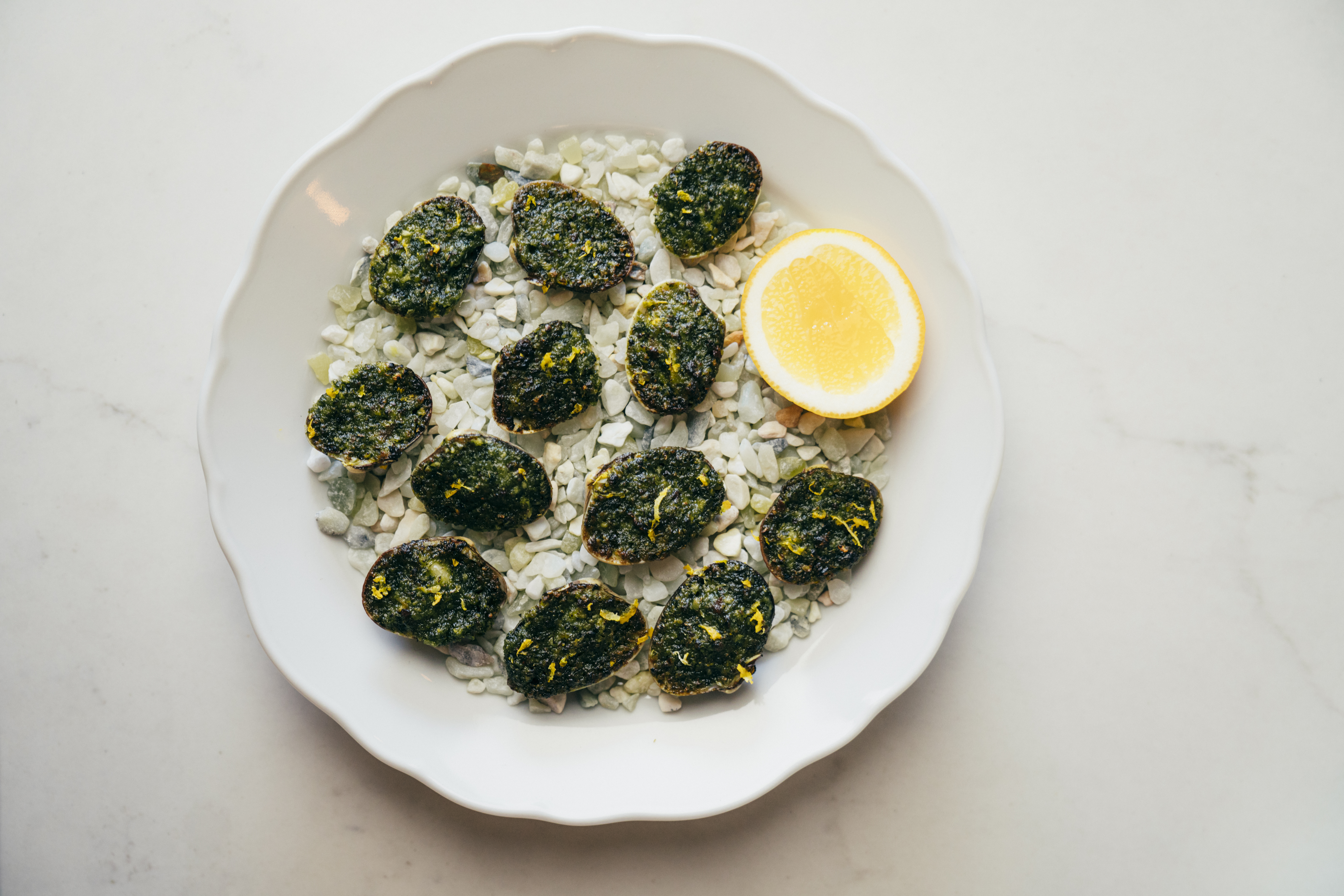
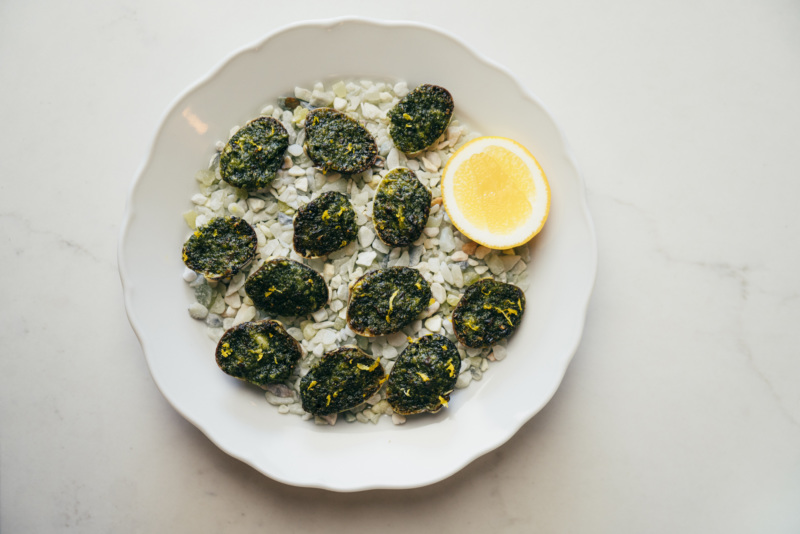
2. Spices are brought in from George’s hometown in India.
For the South Asian notes that do find a place on the menu, the chefs fly in spices from George’s hometown near Kerala, creating flavor profiles that can’t be found anywhere else in L.A. “The problem with most places is that everyone ends up using the same suppliers,” says Boomthanakit. He and George buy directly from farmers located three hours outside of Kerala.
Boomthanakit says the spices have a different taste and smell than much of the imported stuff commercially available. “Our cardamom smells like almonds and our nutmeg comes with a shell on; it’s very sweet,” he says. “It helps us stand out.”
3. Both chefs bring experience from top kitchens.
George has had eight years of experience in classical French dining at IDAM in Doha and Rech in Hong Kong under Alain Ducasse. Boonthanakit worked alongside executive chef Wilfrid Hocquet and José Andrés at Bazaar before becoming CDC at Nightshade, helmed by Mei Lin.
Of bringing in that experience, Boonthanakit says, “The pastries here are still fun. They’re very light and don’t have a lot of gluten. We try to keep everything as light as possible to end the meal.”


4. A key goal is luxury … without pretense.
A main theme of the restaurant is to bring in a sense of extravagance, while still keeping things approachable. “The whole concept is just trying to be as bougie as possible without making it pretentious,” says Boomthanakit.
For instance, the mussels in white wine and bacon sauce come shucked and ready to eat. Dry-aged Dover sole (two are available per day) are filleted tableside by the maître d’ and coated in Grenobloise sauce kept warm in vintage silver sauce pourers, then topped with capers, parsley, and crispy croutons. Chicken breasts are first cooked sous vide, then stuffed with thigh mousse laced with Kerala masala and truffled mushroom puree, before being roasted with garlic and thyme and dressed in their own jus tableside.
“It’s a very long process in order to get a very concentrated flavor,” explains George. Poached lobster tails glazed in smoked lobster butter and drizzled with curry leaf oil are served alongside knuckles and claws, with wilted carrot greens. It’s then blanketed with a hollandaise made with the lobster’s own coral bisque, plus crispy quinoa and chives.
5. Expect clean lines and white design overtones.
The alabaster-hued interior of Camphor has a thoroughly modern feel thanks to white walls, floors, and tile; plus marble tables and bar tops. Everything from the staff apparel to the china carries the theme through, down to the staffers’ crisp shoes. The dining room is accented with stone blue banquettes, brass details, and natural wicker seating.
Against this pristine canvas, you’ll find mismatched antique silver dinnerware sourced from, well, everywhere. “We had to buy a lot of pieces individually from private sellers all over the world,” recalls Boomthanakit. “We wanted it to feel like some old random bistro in an alleyway, which we are.”
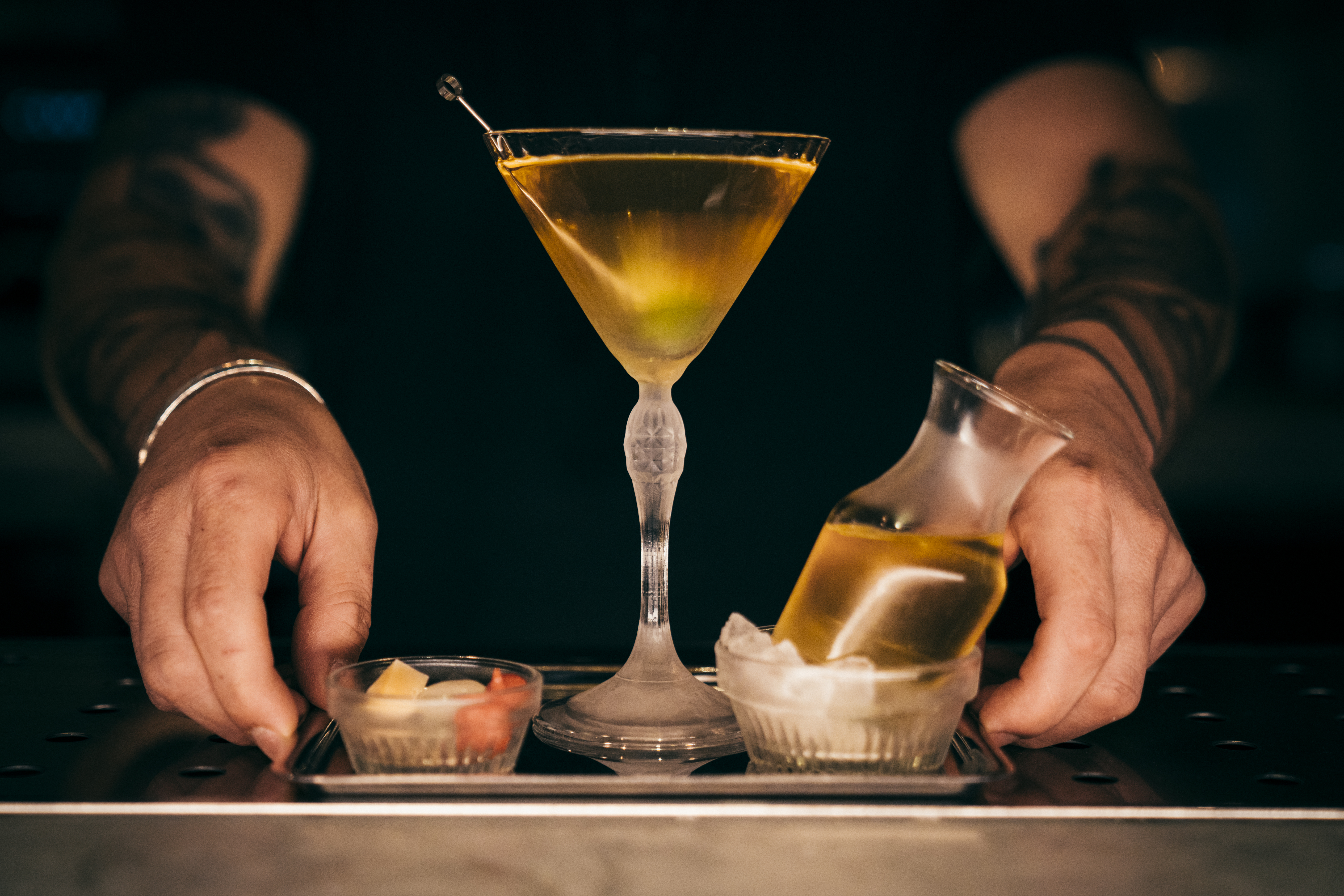
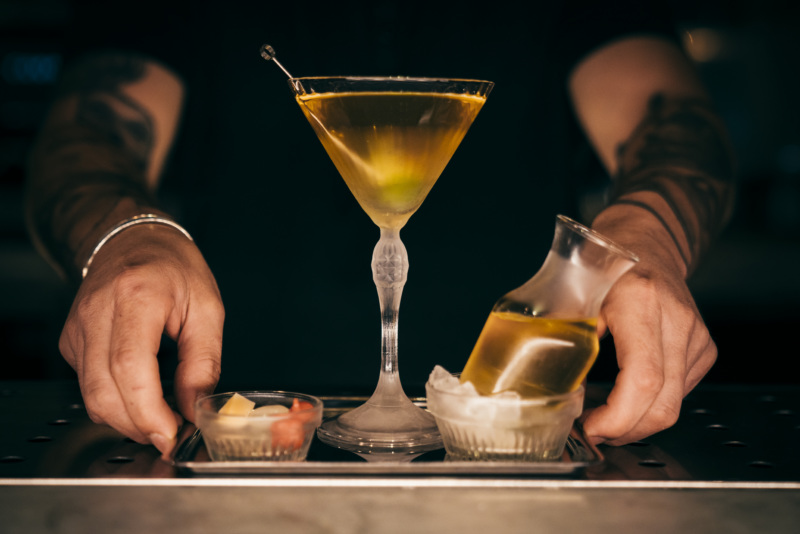
6.Don’t overlook the French-inspired cocktails and Burgundies.
Bar director Andrew Paniagua, formerly of Lock & Key, brings classic cocktails to the forefront using spirits from France and elsewhere, such as Calvados and Cognac. The real star is the $30 Provence Martini, made with French olive oil-washed vodka infused with herbes de Provence, pear eau de vie, vermouth blanc and saline. It comes with a sidecar and accouterments like a Midnight Moon goat cheese-stuffed olive, Peruvian drop pepper, and cippolini onion, and is meant for two.
Wine director Kalani Lau is also maître d’, and has tapped sources for Burgundy and Champagne, but also some local California bottles. In a fitting closing touch, he will also be manning a roving after-dinner bar cart to pour you the perfect digestif.
Esther Tseng is a food, drinks and culture writer. She has contributed to The Los Angeles Times, Eater, Food & Wine, Civil Eats and more. Follow her on Twitter and Instagram. Follow Resy, too.
























